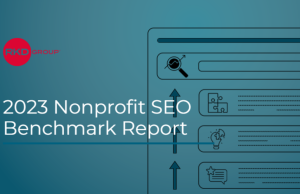The social distancing requirements of the coronavirus pandemic have moved many formerly in-person fundraising events online. For fundraisers at organizations not used to hosting such events, digital affairs can be daunting. OneCause, an Indianapolis, Ind.-based fundraising solutions provider, has a seven-step guide for fundraisers new to online events.
Step 1: Evaluate Pros and Cons
Even absent social distancing requirements, virtual events don’t come with the physical space, insurance, support labor or food expenses. They offer greater flexibility in terms of where and when donors participate. And, data collection can be more robust. That said, they can have a less-personal feel, especially for high-value, high-touch donors. The adrenaline rush that comes with live events can be diminished. And the plethora of online fundraising events makes it harder for a single event to stand out.
Step 2: Determine Budgets and Goals
Be realistic. While there are fewer opportunities to spend as the economy slows, joblessness is up and discretionary income is down. While fixed-price events might help with budgeting, flexible pricing activities, such as auctions or individual sponsorships, offer wider participation opportunities. Consider tiered participation.
Step 3: Assemble Your Team
Virtual event management differs from live event management. Webmasters and online fundraising monitors come to the forefront in these events. For auctions, raffles and the like, you will still need procurement teams and promotion and social media teams, but the hierarchy – which functions feed into which – probably will be reordered.
Step 4: Promote the Virtual Fundraiser
If this is a new event, or if virtual events are new to your audience, review your “how to participate” information carefully. Virtual events might require software downloads, new registration protocol or reassurances about donor information security. Test access links across a variety of platforms and systems – not just PCs and Macs, but also tablets and phones. Additionally, make sure they are compatible with the most commonly used browsers – Chrome, Internet Explorer, Firefox, Safari or any others your donors might use.
Share the links to the fundraiser early and often. If possible, incent your most loyal donors, supporters and volunteers to become ambassadors, spreading word of your event through their own social media channels. And have a cohesive social media strategy of your own, with varied, intriguing content leading up to the event.
Step 5: Launch Your Virtual Fundraiser
There’s more to a virtual fundraiser than just the hour-of or day-of onsite activities. Participants can be urged to mention it on their own social media networks, such as posting their interest in an auction lot, or tracking their progress in a progressive event such as an indoor walk-a-thon. Similarly, you should be reaching out to registrants regarding updates (2,000 miles logged! Next item up for bid!), progress toward goals, to-be featured speakers or entertainers and reminders regarding when the event ends.
Step 6: End Your Virtual Fundraiser
Online auctions and other fundraising platforms in most cases require participants to enter their credit card numbers before participating. Go over what information you’ll be requiring — physical items that need shipping will require a postal address, and some services won’t deliver to P.O. boxes.
Step 7: Follow-up and Evaluate Performance
Thanking participants is always appropriate, even if there is no donation. Sharing or reposting your content, accepting more information or just being “in the stands” and rooting for participants all add value, and a thank-you primes these participants for further interaction with your organization.
As for evaluating an event’s success, there is more to it than just counting donations. Securing new names of interested people, whether for follow-up communication or volunteerism solicitation, should be part of a virtual event’s “wind down” — as well as “tags” on these individual records to invite them to the next event.
The full guide is available here: http://discover.onecause.com/rs/527-FNH-344/images/OneCause-Virtual-Fundraising-How-to-Succeed-in-Seven-Steps-EB.pdf








